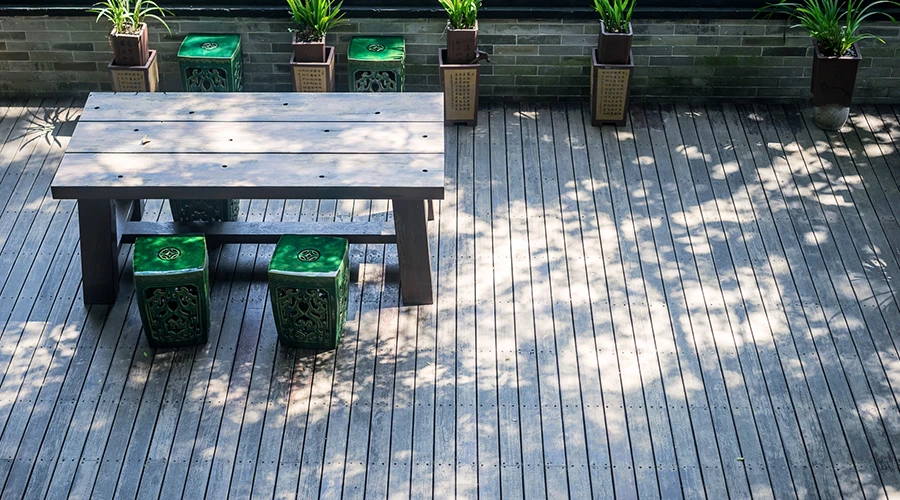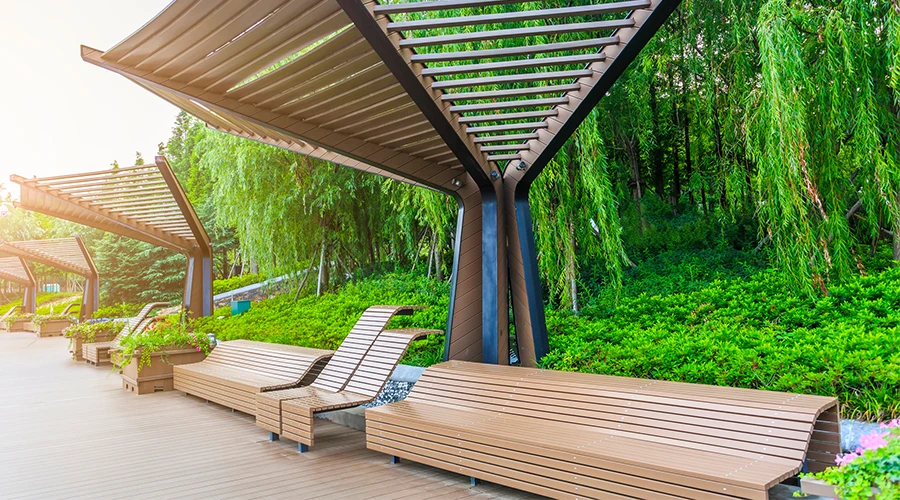If you’re dreaming of summer afternoons on your new deck, one of the biggest choices you’ll face is the material. What to choose? Composite or timber? Both can look stunning, but they perform very differently under Queensland’s hot sun, humidity, and coastal conditions.
Let’s unpack the pros and cons so you can choose a deck that looks great, lasts longer, and suits your lifestyle.
Composite vs Timber Decking: What’s the Difference?
Timber decking
is made from natural hardwoods or treated pine. It’s warm, tactile, and classic. There’s absolutely no surprise it’s been the go-to for decades.
Composite decking,
on the other hand, can be made from a blend of wood fibres and recycled plastics. Some are made from resins. They aim to mimic the look of real wood but do that without the need for constant upkeep.
Both can elevate your outdoor area. The trick is knowing which one suits you best. Some people are just not made for garden maintenance! Others love the thrill of the whole oil-decking experience. Which side of the deck do you lie on? 😉
Durability and Maintenance
Each style of decking has its pros and cons.
Timber: Beautiful but Demanding
Nothing beats the natural grain and feel of real wood. But timber decks need regular love. They need to be cleaned, oiled and sealed to protect them from Sunshine Coast’s sun and rain.
Neglect it, and you’ll see your deck fade, boards warp, or timber splinter faster than you can say “woops, I forgot to put deck maintenance into my diary.” If you’re a homeowner who enjoys the process of maintaining your space, then you might be fine. For busy families, however, deck maintenance can be a chore that quickly adds up.
Pro tip: If you’re the type of person who’ll wait until you see that your deck needs pretty urgent attention, rather than popping in a yearly date with your deck for frequent maintenance, then timber may not be for you.
Composite: Built for the Elements
Composite decking is engineered to handle Queensland’s tough conditions. It doesn’t rot, fade, or splinter like timber can, and you’ll never need to sand or oil it.
That makes it ideal if you want a “build it once, enjoy it for years” solution.
Cost and Long-Term Value
Upfront Costs
Timber decking usually starts cheaper per square metre than composite boards. But that’s only half the story. The other question you can ask, is how does that stack up for the long term?
Lifetime Value
When you add up the costs of oiling, sanding, replacing warped boards, and ongoing labour, composite often works out cheaper over time. Actually, whenever I see this referred to, nobody ever figures in the hours and hours of time spent doing the cleaning, sanding, oiling, and repairs.
Composite also lasts longer. It typically lasts 25 years or more, compared to 10–15 for most treated pine or hardwood decks (which totally depends on maintenance).
Look and Feel
Timber wins hands-down for natural warmth. Every board is unique. If you love texture, variation, and the organic look, it’s hard to go past what nature can offer you.
The Evolution of Composite Boards
However, composite has come a long way. Many modern brands feature realistic grain textures and colour variations that mimic natural wood beautifully.
For coastal homes or modern designs, composite’s clean, uniform finish can look incredibly sharp.
Sustainability and Eco Impact
Composite decking is often made with recycled materials. Products are different and can comprise reclaimed wood fibres and plastics, or resins, making it an eco-friendly choice for sustainable homes.
Timber can also be sustainable if sourced from certified plantations (look for the FSC® mark).
- If your goal is for a totally natural approach, then timber has the edge.
- If your goal is to minimise environmental impact and maintenance, composite has the edge.
Climate Performance on the Sunshine Coast
This is not going to surprise you, but between salty air, high humidity, and harsh UV, Sunshine Coast decks take a beating.
- H3: Timber: Expands and contracts with moisture changes; needs sealing to prevent rot.
- H3: Composite: Designed for moisture resistance and UV stability; minimal upkeep.
For coastal suburbs like Caloundra, Coolum, or Mooloolaba, composite can be the more resilient choice.
Style Options and Customisation
Today’s decking options are anything but boring:
- H3: Timber: Stain or paint to suit any palette.
- H3: Composite: Choose from a range of prefinished tones, from weathered grey to rich walnut.
Greener Landscaping works with multiple suppliers to match your style and budget. You choose the design aesthetics that you want, and we should be able to find you the right product. Maybe you prefer the rustic look, or you want that a more sleek modern entertaining area.
FAQs
Is composite decking hotter underfoot than timber?
It depends on the brand and colour. Darker boards of any material absorb more heat, but newer composite lines are formulated with cooling technology to stay comfortable even in direct sun.
Can I mix timber and composite decking?
Yes, of course you can. Many homeowners combine the warmth of timber features with the practicality of composite in high-traffic or exposed areas.
Which adds more value to my home?
Both can boost curb appeal and lifestyle value. But buyers increasingly prefer low-maintenance decks, so composite often has the edge in resale appeal.
Final Thoughts: Which One Wins?
If you want classic charm and don’t mind seasonal maintenance, timber is a timeless choice.
If you want durability, minimal upkeep, and long-term value, then composite is the smart investment.
At Greener Landscaping, we design and build decks across the Sunshine Coast that blend beauty with practicality. If it’s composite, timber, or even a hybrid design that you are after, we’ll help you create an outdoor space built for your lifestyle.
Contact us today to start planning your dream deck, and make every Sunshine Coast afternoon one to remember.
No related posts.



